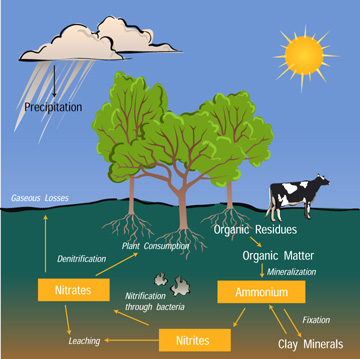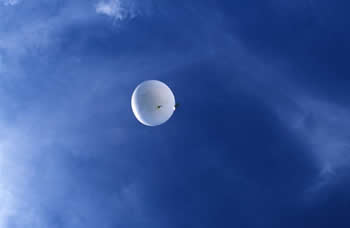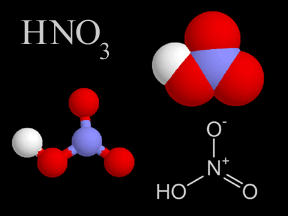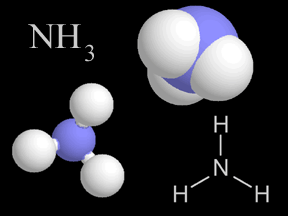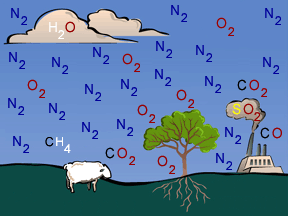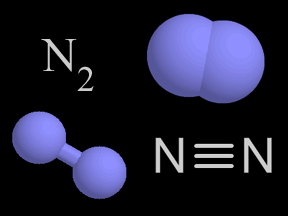Click on image for full size
NCAR
The Nitrogen Cycle
Nitrogen is an element. It is found in living things like plants and animals. It is also an important part of non-living things like the air above and the dirt below. Atoms of nitrogen don't just stay in one place. They move slowly between living things, dead things, the air, soil and water. These movements are called the nitrogen cycle.Most of the nitrogen on Earth is in the atmosphere. Approximately 80% of the molecules in Earth's atmosphere are made of two nitrogen atoms bonded together (N2). All plants and animals need nitrogen to make amino acids, proteins and DNA, but the nitrogen in the atmosphere is not in a form that they can use. The molecules of nitrogen in the atmosphere can become usable for living things when they are broken apart during lightning strikes or fires, by certain types of bacteria, or by bacteria associated with bean plants.
Most plants get the nitrogen they need to grow from the soils or water in which they live. Animals get the nitrogen they need by eating plants or other animals that contain nitrogen. When organisms die, their bodies decompose bringing the nitrogen into soil on land or into ocean water. Bacteria alter the nitrogen into a form that plants are able to use. Other types of bacteria are able to change nitrogen dissolved in waterways into a form that allows it to return to the atmosphere.
Certain actions of humans are causing changes to the nitrogen cycle and the amount of nitrogen that is stored in the land, water, air, and organisms. The use of nitrogen-rich fertilizers can add too much nitrogen in nearby waterways as the fertilizer washes into streams and ponds. The waste associated with livestock farming also adds large amounts of nitrogen into soil and water. The increased nitrate levels cause plants to grow rapidly until they use up the supply and die. The number of plant-eating animals will increase when the plant supply increases and then the animals are left without any food when the plants die.


